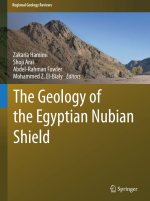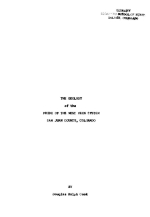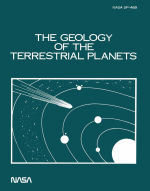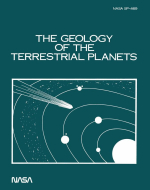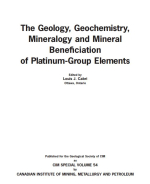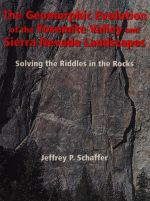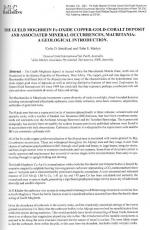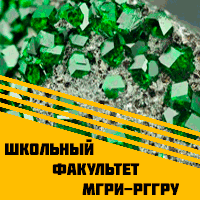El Soldado is the largest (>200 Mt @ 1.4% Cu) of the known Cu manto-type deposits in central Chile. It is strata-bound within a submarine, bimodal calc-alkaline basalt - rhyodacite unit of the Lower Cretaceous Lo Prado Formation., which also contains marine carbonaceous shales and volcaniclastic sandstones. Although stratigraphically restricted, the clustered orebodies are mostly vein-like and discordant, controlled by a system of N-S to NNW faults fonned within a transtensional zone (cymoid loop) of a sinistral, strike-slip brittle shear system. Individual orebodies are zoned, with an external and deeper zone of barren pyrite, followed inward by concentric zones with chalcopyrite-pyrite, chalcopyrite bornite, bornite-chalcocite, and a central zone of chalcocite (± digenite ± covellite) and abundant hematite. The deposit was formed in two main phases: l)a low-temperature, diagenetic phase during which framboidal pyrite developed in association with migrated petroleum, at ca. 130 to 120 Ma; 2) a high-temperature (>300°C from fluid inclusions) hydrothennal phase at ca. 103 Ma, (coinciding with batholith emplacement), that deposited early hematite (± magnetite), followed by chalcopyrite, bornite and chalcocite, mostly replacing pre-existing pyrite, with the excess Fe forming hematite. Gangue minerals are calcite, albite, k-feldspar and chlorite. The hydrothermal Cu mineralization is associated with an increase in Na and depletion in K in host rocks, although there are localised zones of K increase in bornite-chalcocite assemblages near structures. Isotopic studies indicate that: a) the sulphur in diagenetic pyrite provided the bulk of the sulphur for Cu sulphides; b) petroleum was the source of carbon in bitumen and part of the carbonate; c) osmium in diagenetic pyrite was derived from the black shales; d) strontium in calcites was inherited from the Cretaceous arc lavas; e) oxygen isotopes in carbonates, and K-feldspar and atmospheric argon in K-feldspar plus the high salinity of fluid inclusions (21-26% NaCl equivalent) suggest a basinal connate-metamorphic brine was responsible for Cu transport, yet a (distal) magmatic component to the fluids cannot be ruled out.




